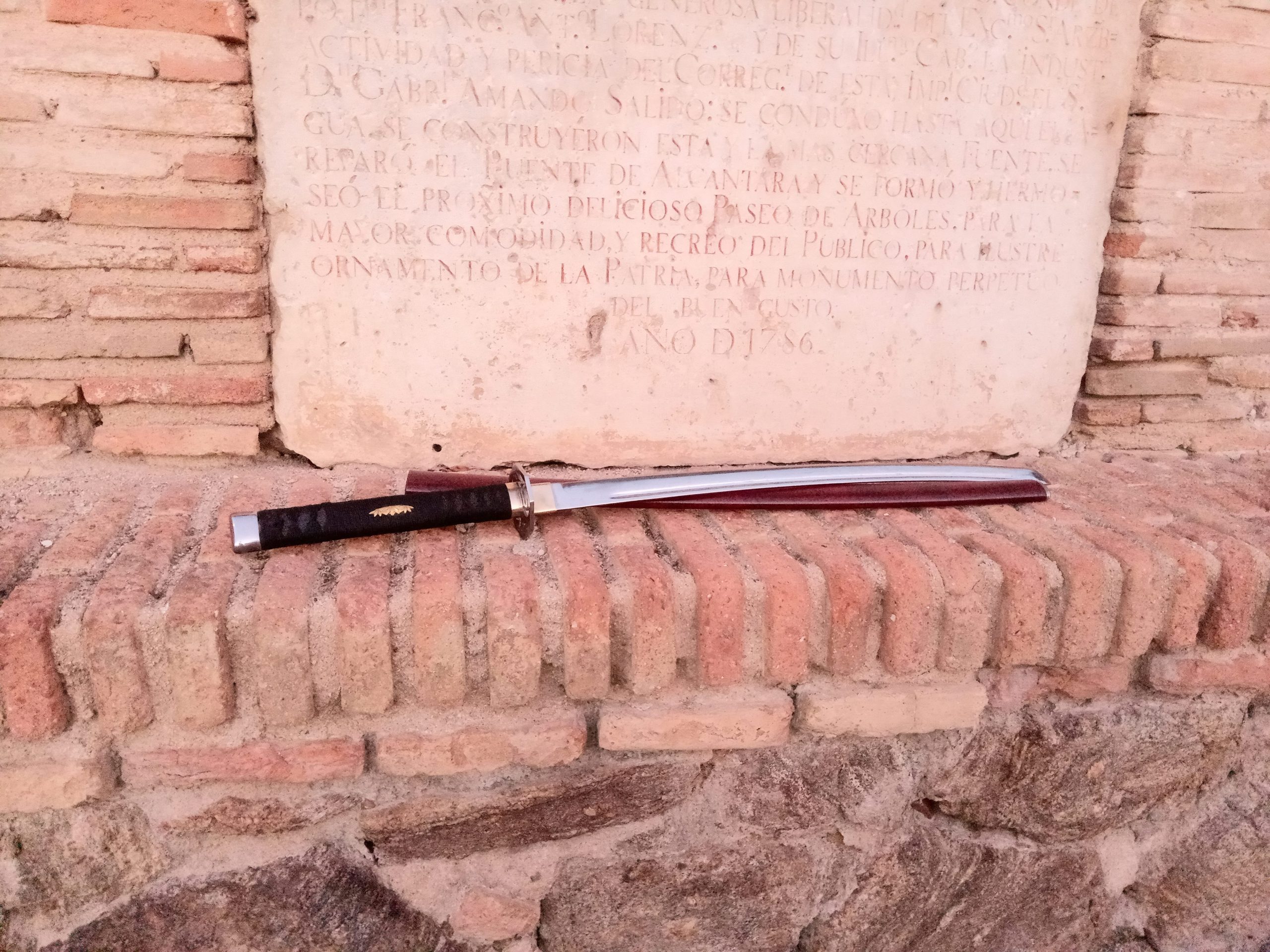From October 8 to 12 you have a very special appointment since the FARCAMA fair celebrates its 40th anniversary and of course, we will be with them to celebrate it. For this, we will expose some of our most special swords like this one, the Katana.
Returning to history a bit, we can dare to say that the saber is one of the best known weapons anywhere in the world. Specifically, the sword of the Japanese warrior, commonly known as «samurai», has a great extension and an almost «mystical» manufacture. Specifically, the katana, the Japanese sword that we will exhibit in Farcama, is the best known in the world.
The blades of these weapons were often embellished by engraved drawings called horimonos and their guard was called tsuba, which was also beautifully decorated. In addition, these sabers were characterized by being single-edged and generally curved and all used to be hand-tempered steel.
To store these weapons there were boxes called katana zutsu and they were made of wood, tubular in shape and some of them wonderfully decorated. There were also some wooden supports called katana-kake.
Another sword generally shorter than the katana is the wakizashi. This used to carry embedded in its sheath a sharp knife called kogatana or kogai, a kind of awl or scraper.
The smith or craftsman who tempered these swords was called «kají» in Japanese. One of the highlights of these smiths or craftsmen is that their profession was as «mystical» as a religion. Everyone thought that the rites of its creation were magical: both for the extraction of iron from the stones, and for the constant treatment with water and fire to develop the steel and shape the final weapon. Some of the most famous saber-smiths appeared in Japanese history between 400 and 1450.
Technical specifications of our katana: Tskuka.
The tsukamaki or braided in katatemaki style is preferred to be used in battles, thanks to the type of grip it has.
With respect to the menukis, they are made of bamboo, which symbolizes resistance and flexibility, both qualities desired by samurai warriors.
The fuchi or collar has a heron, which means wisdom, and the kashira (threath) is the solid one-piece and with mass, perfect for performing atemis (blows) with the tsuka against opponents who are very close and you cannot unsheathe the sword.
The tsuba or guard is hanjiro style, a type widely used by samurai who were dedicated to hunting.
The skirt or sheath was made in two-color ishime, with a rough touch and mottled in black with a red background. This style of lacquer was one of the most popular, both for aesthetics and for its practicality, and this type of lacquer is very difficult to scratch.
The kojiri, a metallic piece at the tip of the sheath, fulfills both an aesthetic and a practical function, since when training and making the tag (reiho) it avoids unwanted blows when sliding on the ground.
Regarding its size, we have to highlight that it is a sword that measures 106 cm in total, of which the blade is 76 cm and 28 cm the length of the handguard. In addition, the maximum width of this saber is 7.5 centimeters.


